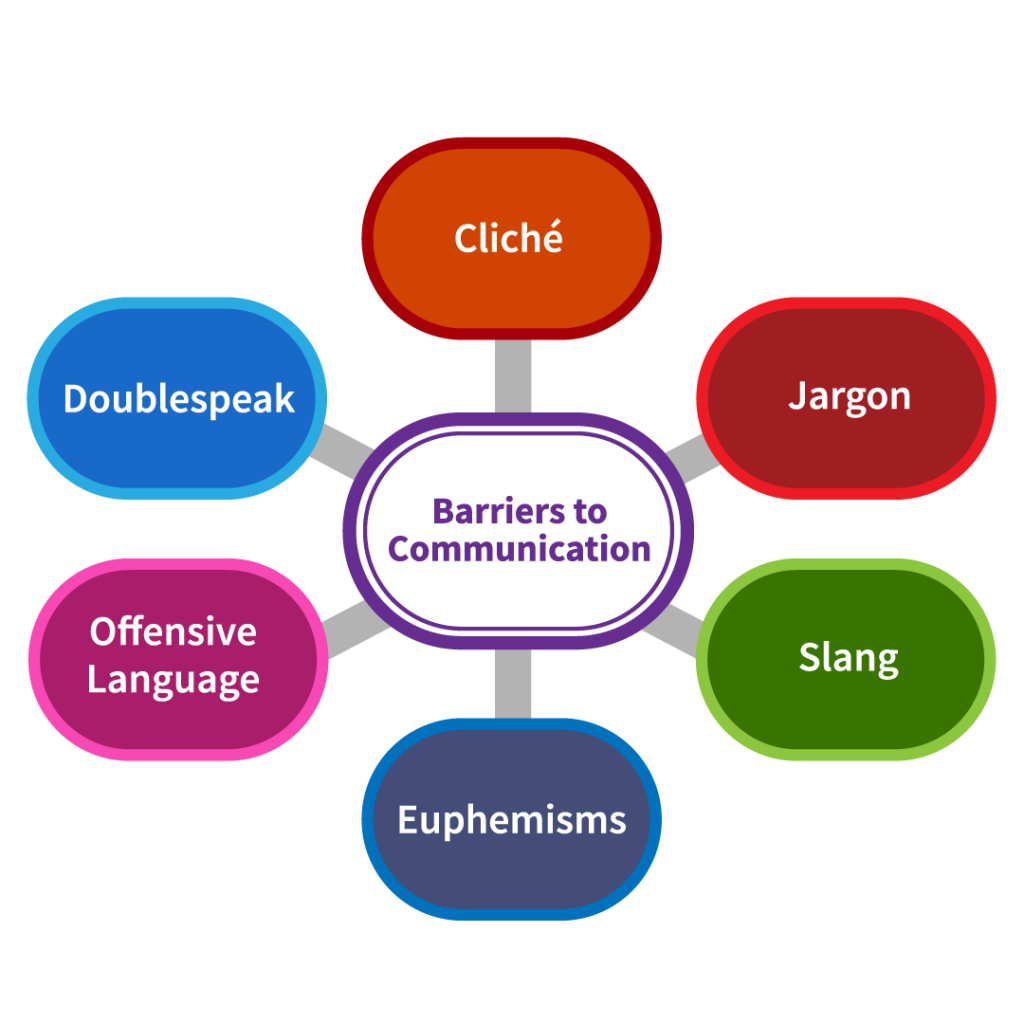4.3 Language Can be an Obstacle to Communication
In the past when you have used language to make sense of your experiences, and to take part in discussions, you no doubt came to see that language and verbal communication could work for you…and sometimes against you. Language allowed you to communicate, but it also allowed you to miscommunicate and misunderstand.
In an article titled The Miscommunication Gap, Susan Washburn (2008) lists several undesirable results of poor communication in business:
- Damaged relationships
- Loss of productivity
- Inefficiency and rework
- Conflict
- Missed opportunities
- Schedule slippage (delays, missed deadlines)
- Scope creep…or leap (gradual or sudden changes in an assignment that make it more complex and difficult than it was originally understood to be)
- Wasted resources
- Unclear or unmet requirements
Watch the following 4 minute video on miscommunication:
How miscommunication happens (and how to avoid it) – Katherine Hampsten
Video: How miscommunication happens (and how to avoid it) by TED-Ed [4:32] transcript available on YouTube.
In the following section you will explore how words can serve either as a bridge, or a barrier, to understanding and conveying meaning. Your goals of effective and efficient business communication require words and terms that keep the bridge clear and free of obstacles. Review the six barriers to communication in Figure 4.2 as follows:

- Cliché – cultural references that often make no sense in other cultures. For example, “A cliché is something to avoid like the plague, for it is nothing but a tired old war horse, and if the shoe were on the other foot you too would have an axe to grind.”
- Jargon – Occupation-specific language used by people in a given profession. Jargon does not necessarily imply formal education, but instead focuses on the language people in a profession use to communicate with each other.
- Slang – The use of existing or newly invented words to take the place of standard or traditional words with the intent of adding an unconventional, nonstandard, humorous, or rebellious effect. It differs from jargon in that it is used in informal contexts, among friends or members of a certain age group, rather than by professionals in a certain industry.
- Euphemism – Involves substituting an acceptable word for an offensive, controversial, or unacceptable one that conveys the same or similar meaning.
- Doublespeak – The deliberate use of words to disguise, obscure, or change meaning.
- Offensive Language – Some language is offensive and has no place in the workplace. It may even be a violation of company policy.
Each of these six barriers to communication contributes to misunderstanding and miscommunication, intentionally or unintentionally. If you recognize one of them, you can address it right away. You can redirect a question and get to essential meaning, rather than leaving with a misunderstanding that might impact a business relationship. In business communication, your goal of clear and concise communication should remain constant. Never forget that trust is the foundation for effective communication.
Part of your effort must include reinforcing the relationship inherent between source and receiver. One effective step toward that goal is to reduce obstacles to effective communication. The more you can learn about your audience, the better you can tailor your chosen words. If you lack information or want your document to be understood by a variety of readers, it pays to use common words and avoid jargon. This is known as actively bridging communication to help ensure your audience clearly understands your intended message.

Read the following 5-minute article from the UK Telegraph titled: Revealed: The 10 most scream-inducing business jargon phrases
Review the following 3-minute video on YouTube titled: Office Jargon by Nina Millns
Video: Office Jargon by Nina Millns [3:13] Transcript
To summarize, in order to defuse common obstacles to communication, avoid clichés, jargon, slang, sexist and racist language, euphemisms, and doublespeak.
“13. Language Can be an Obstacle to Communication” from Communication for Business Professionals by eCampusOntario is licensed under a Creative Commons Attribution-NonCommercial-ShareAlike 4.0 International License.

